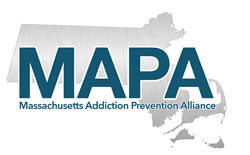Massachusetts is in the midst of an epidemic of opioid use and overdose deaths. Opioid-related deaths were more than four times higher in 2015 than in 2000, and the rate of opioid-related death rate in the state has surpassed the national average. More than two-thirds of Massachusetts cities and towns have experienced an opioid-related death, making it a widespread, pervasive problem touching nearly every community.
Young people in Massachusetts are particularly vulnerable to opioid-related deaths. In 2013-2014, opioids were responsible for more than a quarter of the fatalities in the 18 to 24 age group and a third of all deaths for those 25 to 34. In 2015, two-thirds of all opioid-related deaths were people under 45.
While 2016 brought a decline in deaths blamed on heroin, it was offset by a corresponding increase in fentanyl-related overdose deaths. Toxicology screens showed fentanyl present in 75 percent of the fatalities, a percentage that has been rising sharply since mid-2015.
While progress was made in reducing opioid overdose deaths in recent years, that trend has flattened and shows signs of reversing in 2020.
